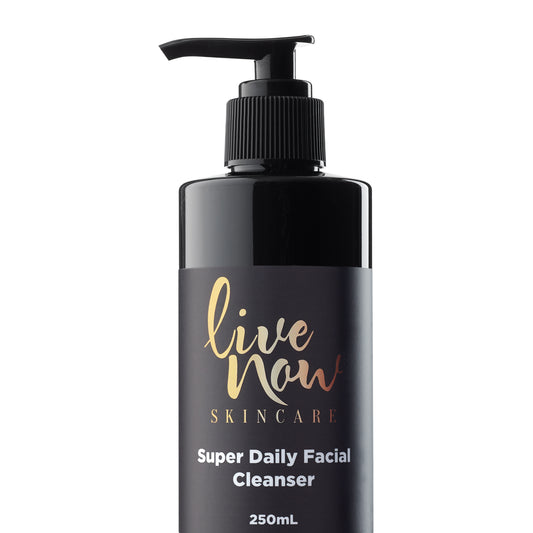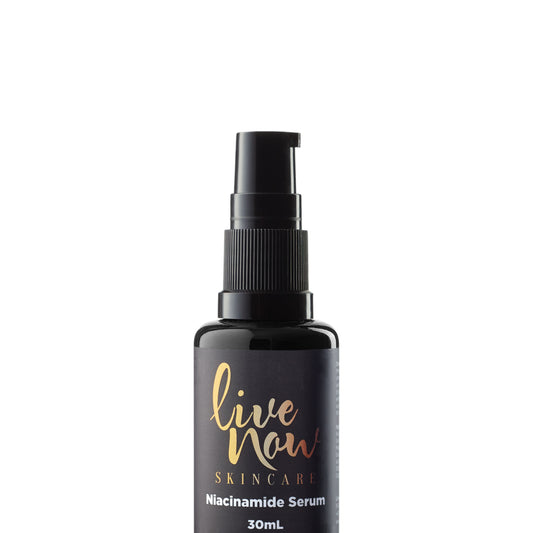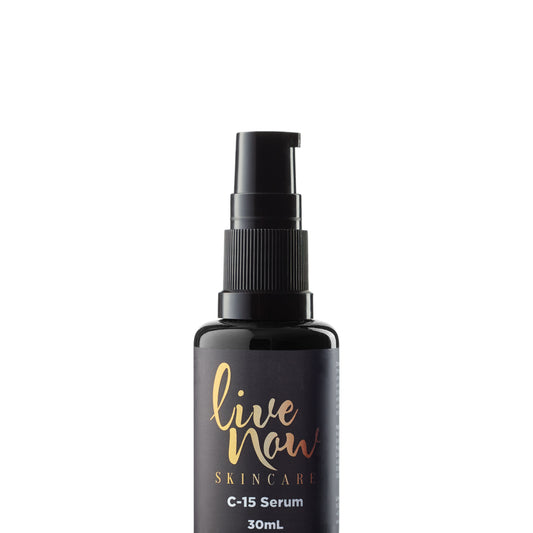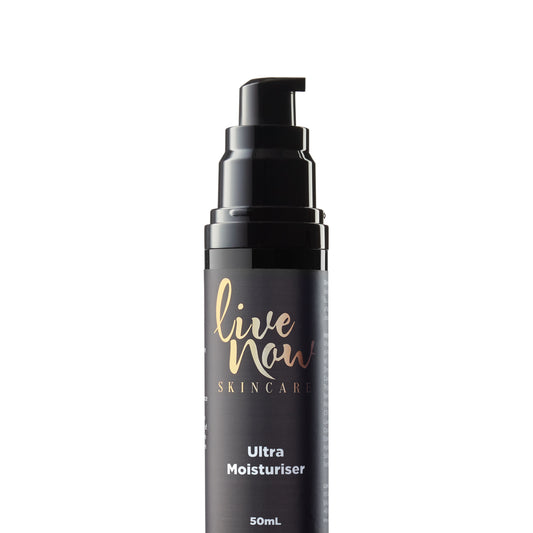Ageing Skin
Skin ageing is a complex phenomenon that encompasses many changes influenced by intrinsic and extrinsic factors, leading progressively to a loss of structural integrity and physiological function. To date, many papers have suggested varying ingredients are of use to stop or slow down the ageing process in the skin. Dr Kligman - the father of cosmeceuticals - suggests that in order to decrease the signs of ageing, the cosmetics ingredients need to address three major factors within the skin.
Dr Kligman - the father of cosmeceuticals - suggests that in order to decrease the signs of ageing, the cosmetics ingredients need to address three major factors within the skin.
- Can the ingredients penetrate the stratum corneum of the epidermis?
- Do the ingredients have a specific biomedical action within the skin to reverse the signs of ageing, and
- are the publications, peer reviewed, double blind, placebo-controlled, statistically significant, clinical trial? Levin & Momin (2010)
These questions need to be asked when scientifically evaluating the potential therapeutic claims made by the cosmetic companies.
When considering what product to use on our ageing skin, we need to first appreciate the changes that occur within the skin over time. The ageing of the skin encompasses many changes influenced by intrinsic and extrinsic factors, over time, these two factors become synergistic, leading to the aged look. Ramos-e-Silva & Carneiro (2007).
Intrinsic factors, also termed true or chronological ageing, occurs as a natural result of physiological changes over time. Individual genetics are most responsible. -Costa (2013). Other Intrinsic factors include ethnicity, anatomical variations and hormonal changes.
Extrinsic factors are due to factors that can be controlled and occurs in different measures and intensities. For example, surrounding conditions such as temperature and water evaporation. “Anunciato, de Rocha, & Filho, (2012), suggest “the appropriate formation of structural proteins and lipids in the skin depends on the environmental temperature”. Smoking has been shown to have an incredible impact contribution to the skin’s ageing. Smoking increases keratinocyte dysplasia and skin roughness and is responsible for facial wrinkling. A clear dose –response relationship between wrinkles and smoking has been identified. Kennedy, Bastiaens & Bajdik (2003). The damage to the skin caused from smoking is more pronounced than the sun, due to a decrease in blood circulation and therefore leads to deprivation of nutrients in cutaneous tissue. Leow & Maibach (1998). There is a reduction in collagen and elastin fibres in the dermis as well as an increase in keratinocytic dysplasia and free radicals. Bernhard, Moser, Backovic & Wick (2007). Sun-exposure induces a rapid flow of molecules and cellular changes that produce a general atrophy of the skin. These effects are deep within the skin and represent 90% of the visible signs of ageing, however there is also a greater risk of neoplasms. Farage, Miller, Elsner & Maibach (2007).
The main concerns with aging skin are loss of firmness and volume, and the development of fine lines and wrinkles. Loss of firmness of the skin, is caused over time by the degradation of collagen and elastin fibres in the skin’s structure. Fine lines or ‘expression lines’, form along the lines that are created when we smile or frown. As the skin thins and starts to age, fine lines become permanent. Wrinkles are deeper lines in the face.
There are three layers of the skin, the epidermis (the outer layer), the dermis (the middle layer) and the hypodermis (which lies beneath the dermis). It is in the dermis that contains collagen, elastin and hyaluronic acid Collagen is what gives our skin strength and structure, Elastin is the protein in the body’s connective tissue that provides our skin with elasticity. Hyaluronic Acid keeps collagen production up as well as retaining skin moisture.
Current treatments for Ageing Skin
The current treatment approach for ageing skin starts with preventing photo-ageing through the use of sunscreens, preferably a broad-spectrum screen that can block UVC, UVB and UVA sun rays. UVB sun rays penetrate the epidermis only and are responsible for the erythema associated with sunburn. UVA requires a 1000-fold higher levels of radiation to cause sunburn, and recent developments have proved that indeed they are responsible for most of the chronic skin damage associated with photo-ageing.
The second treatment strategy for skin anti-ageing is the use of active agents to postpone or reduce the signs and symptoms of ageing. The active ingredients in cosmeceuticals claim to decrease fine lines and wrinkles, even skin texture and decrease pigmentation and sallow skin.
Use a SPF 50+ with a broad spectrum screen that blocks UVC, UVB and UVA sun rays when outdoors for long periods of time. This may need to be reapplied after swimming.
Minimise your exposure to environmental invaders such as smoke and air pollution. Antioxidant’s especially B3 Niacinamide helps to protect the skin by reducing toxic free radicals and minimising their potential for causing damage.
Topical Vitamin C serum has been shown in recent research to initiate the production of collagen and elastin, as well as assisting in maintaining the dermal matrix. Applying a topical Vitamin C results in much higher levels in the skin than by oral ingestion.
Apply a topical Vitamin A may increase cellular turnover, stimulate collagen and elastin, improve skin texture, provide support for acne skin, and discourage melanocyte grouping. skin’s surface
Use a moisturiser that stimulates and restores optimal moisture balance while hydrating and revitalising. As we age, our skin’s natural production of hyaluronic acid starts to slow, which attributes to the thinning of the dermal matrix.
Hyaluronic acid is a water-binding molecule that works within the dermal matrix to help plump out the dermis and repair the signs of photoageing such as thinning of the skin. As a result of skin plumping, the appearance of fine lines and wrinkles decrease.
Book in for regular professional skin treatments which can help to smooth, plump and retexturise the skin, and stimulate the skins’ own renewal of collagen and elastin levels
Ensure you get adequate sleep and eat a balanced healthy diet.
KEY INGREDIENT SPOTLIGHT: RETINOL
Retinol (Vitamin A) has been scientifically proven to be the most effective ingredient for improving the signs of skin ageing. The main benefits are:
- Refines - increasing cell turnover.
- Plumps - Increases collagen synthesis and epidermal thickness.
- Perfects – Regulates oil secretion.
By increasing cell turn over, Retinol can help the skin’s surface to appear more refined. This skin renewal action makes Retinol ideal to tackle other key skin concerns such as age spots, acne and photodamaged skin.
Studies show that one of the main ways in which retinol works is by inducing the skin’s natural production of hyaluronic acid within the dermal layer of the skin. Hyaluronic acid is an essential component of the dermal matrix, along with collagen and elastin. are decreased.
KEY INGREDIENTS SPOTLIGHT: PURE VITAMIN C
Pure Vitamin C (L-Ascorbic Acid) works to combat skin ‘sagging’ by boosting resilience and firmness with Pure Vitamin C (L-Ascorbic Acid). Along with Pure Vitamin C, the range also includes complimentary ingredients that work together to support the production of the skin’s own renewal of collagen and elastin.
Pure Vitamin C (L-Ascorbic Acid)
• Promotes collagen synthesis
• Helps to prevent premature skin ageing
• Provides environmental protection
• Firms & smooths
| RECOMMENDED PRODUCTS | |
| 5% GLYCOLIC CLEANSER 250ml |
 |
| ULTRA MOISTURISER 50ml |
 |
| VITAMIN A1 50ml |
 |
-

-
Australian Made and Owned
The Live Now Skincare products are researched, developed, and manufactured in Australia.
Customer Favourites
-
Super Daily Facial Cleanser with 5% Glycolic Acid 2.5% Salicylic Acid for Acne-Prone, Oily, and Combination Skin - 250ml | Made in Australia
Regular price $39.00 AUDRegular priceUnit price per
-
Vitamin B3 Serum with 10% Niacinamide - 30ml | Made in Australia
Regular price $30.00 AUDRegular priceUnit price per
-
Vitamin C Serum with 15% Ascorbic Acid - 30ml | Made in Australia
Regular price $50.00 AUDRegular priceUnit price per Sold out
Sold out -
Ultra Moisturiser with Hyaluronic Acid, Retinol, and Vitamin E - 50ml | Made in Australia
Regular price $50.00 AUDRegular priceUnit price per Sold out
Sold out





